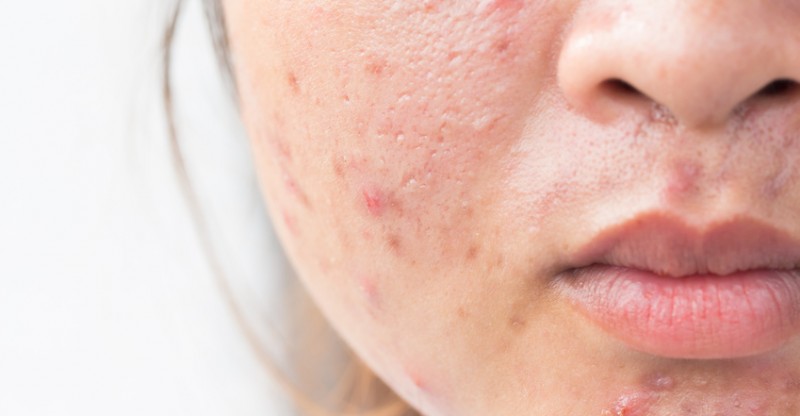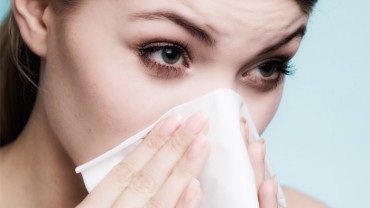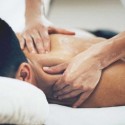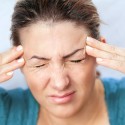How to Get Rid of Acne Fast (22 Natural Remedies)
Let me guess: you’ve probably tried dozens of traditional dermatologist-recommended methods to treat acne.
You’ve swallowed many types of pills, including unhealthy antibiotics.
You’ve applied multiple creams and gels to your skin, which are full of chemicals.
Or maybe you’ve even tried harsh peels and laser medications, which were praised by your doctor.
But none of them have worked…
If so, congratulations on finding your way to this article!
You’re seeking a natural remedy that won’t harm your skin and might help get rid of your acne.
Before we delve into reviews of natural remedies for acne, let’s start with the basics.
It’d probably help if doctors explained what acne is before prescribing medications to treat it.
So if no one has done that, let me explain it to you:
Acne is a condition that affects the skin’s oil gland.
And remember, acne doesn’t just occur to teens; some adults have it as well.
In fact, did you know that acne affects up to 50 million Americans every year?
Acne occurs when the sebaceous glands become overactive, so you need to identify the reason why this activity is occurring to effectively treat it.
Overactive oil glands produce too much oil, which may clog pores when combined with skin cells.
After the pores become plugged, bacteria on the skin may spread and affect other areas.
Generally, the face, back, chest, and shoulders are the most defenseless parts of the body against acne.
Types of Acne
- Blackheads (also called clogged pores and open comedo)
Clogged pores are dark (usually tiny) dots that occur on the surface of the skin.
While many believe their pores get clogged with dirt, pores can also get clogged with oily, dry, or dead skin cells.
If they become inflamed, clogged pores may transform into other types of acne.
- Whiteheads (also called closed comedo)
Whiteheads occur on the surface of the skin as pale or white-topped pustules.
They’re usually small and consist of a widened hair follicle that’s filled with dead skin cells, bacteria, and oil.
- Papules
This type of acne is small to medium in size.
It’s caused by inflammation that’s usually accompanied by redness and swelling.
- Pustules
Basically, pustules are a more inflamed-looking, bigger variation of whiteheads.
They have pus under the surface, which explains the name.
While the pus is whitish or yellowish-looking, this type of acne is more painful to the touch than all the above ones.
- Severe acne (also called nodules and cysts)
When you have severe acne, you develop large, red, inflamed blemishes on one or more areas of your skin.
If left untreated, severe acne can cause permanent damage to your skin, including scarring.
Most Common Causes of Acne
The American Academy of Dermatology identifies the six most common causes of acne, which can either trigger acne or make it worse:
- Heredity/genetics/genetic predisposition
Multiple studies show that a family history of acne is significantly associated with an increased risk of developing acne.
Thus, if either of your parents suffered from acne, there’s an increased risk that you will get acne as well (2).
- Hormones
Hormonal changes are directly linked to acne, especially during puberty, pregnancy, and the use of birth control pills.
Hormonal changes cause oil glands to increase in size, which leads to the production of excess oil.
The result? Clogged pores (3, 4).
Due to the drastic hormonal changes during puberty, teens have a larger risk of developing acne.
- Menstruation
Women often experience breakouts before and during their periods.
Menstruation may trigger or worsen the existing case of acne, due to changes in estrogen, progesterone, testosterone, and plasma levels (5, 6).
- Emotional stress
While studies show that there’s a very low risk that emotional stress will trigger a new case of acne, stress is often associated with aggravating an existing case of acne (7).
- Medications
Taking certain drugs (in particular androgen hormones and lithium) increases the risk of triggering or worsening acne (8).
- Diet
A diet full of foods with a high glycemic load (think white grains and sweets) may trigger breakouts (9).
- Other Factors
There are several factors that can worsen the existing case of acne:
- Picking any type of acne can aggravate your acne and leave scarring or skin discolorations.
- Air pollution or humid conditions have been linked to aggravating the existing case of acne (10).
- Oily makeup and skincare products may also clog your pores.
- Touching your face with dirty fingers may clog your pores with dirt.
- Using harsh chemicals found in creams, gels, soaps, and makeup products can cause acne.
Natural Remedies for Acne
While many believe that harsh chemicals, antibiotics, skin peels, and laser medications are the only ways to treat acne, they don’t realize the dangers of each of these approaches.
And most of the time, they’re useless and cost a fortune.
You won’t hear this information at a dermatologist’s office, but effective natural remedies for acne actually do exist.
While there are many natural treatments that don’t work (or may work only in rare cases), we’ve put together the 22 natural remedies that have been either backed by research or found effective by thousands of people.
Toothpaste
Many acne sufferers have found this natural remedy very effective because it helps dry out acne.
To treat your acne with toothpaste, opt for an all-white version.
It contains baking soda, hydrogen peroxide, and triclosan (the ingredients that have acne-fighting properties) (11).
Hydrogen peroxide kills acne-causing bacteria.
Due to its oxygen molecule, triclosan is a potent antibacterial agent.
Meanwhile, baking soda is an antiseptic solution that can also be used for exfoliation.
Directions:
- Wash your face.
- Put a little toothpaste on the affected areas of your skin for 30 minutes.
- Rinse it off with lukewarm water.
- To get the most out of this natural remedy, repeat the above steps at least twice a day (before going to sleep and the first thing in the morning) until you get rid of the acne.
Note:
- Toothpaste may sting your skin a little. However, if the stinging becomes intolerable, it’s recommended to immediately wash it off to prevent dryness or irritation.
Honey
Honey has been around for centuries. Not only can it be a yummy dessert, it also helps treat acne.
Numerous studies have shown that honey is effective for treating psoriasis, dermatitis, seborrhea, and other conditions.
And it provides your skin with anti-aging, rejuvenation, and anti-wrinkle properties (12).
The use of honey has also been linked to preventing pathogen infections, killing bacteria in the oil glands, and serving as a powerful disinfectant for the skin (13).
Directions:
- Wash your face.
- Put some 100% natural honey onto a clean cotton pad.
- Using the cotton pad, apply the honey to the affected areas of your skin.
- Keep it there for at least 30 minutes.
- Wash it off with lukewarm water.
Note:
- To maximize honey’s antibacterial properties, you can add some cinnamon powder to honey (14).
Lemons
Lemon is a potent germicide that kills bacteria, both inside the body and when applied externally (15, 16).
In addition to drying out acne, lemon juice helps get rid of excess oil in the skin.
Directions:
- Squeeze some juice onto a clean cotton pad.
- Apply the lemon juice to the affected areas of your skin.
- No need to wash it off. Let it air dry instead.
- Moisturize your skin.
Notes:
- It’s best to apply this procedure before heading to sleep.
- You can make an even more potent antibacterial mixture by adding some cinnamon to lemon juice (14).
- Applying lemon juice as treatment of acne may not suit individuals with sensitive skin, as it may irritate it.
Tea Tree Oil
Due to its antibacterial and skin-cleansing properties, tea tree oil is effective at getting rid of both inflamed and non-inflamed lesions (15, 16).
In fact, some studies suggest that tea tree oil can be just as effective as benzoyl peroxide, which is commonly recommended by dermatologists.
In addition to its antibacterial properties, tea tree oil also decreases redness and dries out whiteheads.
Directions:
- Wash your face.
- Pour a few drops of tea tree oil on a clean cotton pad.
- Apply the drops to the affected areas of your skin.
- After 20 minutes, wash it off with lukewarm water.
Notes:
- To enhance the anti-inflammatory and bacteria-killing properties of tea tree oil, you can add a few drops to a tablespoon of aloe vera gel. Aloe vera provides antiseptic, anti-inflammatory, antibacterial, and healing properties (17, 18).
- If you have sensitive skin, it’s best to avoid using tea tree oil as a natural remedy for acne, as it may irritate your skin.
Ice
Due to its natural properties, ice diminishes swelling and pushes out excess oil and pus from the infected pores.
It also reduces redness and diminishes the pain that those swollen spots sometimes cause.
It’s most effective against whiteheads and papules.
If used before a spot leaves behind scarring, ice can minimize the chance of getting a scar.
Directions:
- Wrap a few ice cubes with a washcloth.
- Hold the ice pack on the affected areas of your skin for a few minutes.
- Repeat the above steps 3-4 times throughout the day.
Notes:
- To avoid frostbite, don’t directly apply ice to your skin.
- The more frequently you repeat the above steps, the less swollen your acne appears.
Aloe Vera Gel
As we’ve noted above, Aloe vera provides antiseptic, anti-inflammatory, antibacterial, and healing properties (17, 18).
Aloe vera gel has been scientifically proven as a natural remedy for acne.
In addition to killing bacteria on the skin, it diminishes the irritation and redness of your spots and gets rid of excess oil.
Directions:
- Wash your face.
- Apply aloe vera gel to the affected areas of your skin.
- Keep it there for 15 minutes.
- Wash it off with lukewarm water.
- Repeat the above steps twice a day.
Steam Bath
A steam bath can be a very effective way to prevent acne, especially when you’re dealing with clogged pores, blackheads, and whiteheads.
Hot steaming cleanses your pores by making you sweat, which opens the pores and pushes any dirt and dead skin cells out (22).
Direction:
- If you have long hair, pull it away from your face with a hair tie.
- Wash your face.
- Pour water into a large pot and bring to a boil.
- Remove the pot from the heat and place it on the table.
- Sit in a chair and position your face over the pot.
- Drape a towel over your head, so that no heat escapes the ‘tent’ you’ve created.
- Stay in that position for 10 minutes.
- Thoroughly rinse your face with lukewarm water.
- Apply moisturizer.
- Repeat the above steps 2-3 times per week.
Garlic
Garlic contains potent antibacterial properties, both when ingested and used externally.
Garlic helps reduce the inflammation and swelling of acne (23).
Specifically, garlic contains ajoene, which has been proven to diminish antifungal activity (24).
Directions:
- Cut a garlic clove into two pieces.
- Take the two halves and rub them against the affected areas of your skin.
- Leave the garlic juice on the skin for 5 minutes.
- Rinse the juice off with lukewarm water.
- Repeat the above steps a few times throughout the day.
Note:
- To maximize garlic’s acne-killing properties, add it to your diet.
Baking Soda
As we’ve noted above, baking soda (contained in toothpaste) is an effective antiseptic solution, which can also be used for exfoliation.
Baking soda opens the pores and pushes out the acne-causing excess oil, dead skin cells, and dirt.
It also exerts scar-healing properties.
Directions:
- Wash your face.
- Blend a teaspoon of baking soda with a little bit of water (until thick).
- Add a few drops of lemon juice into the mixture.
- Apply the thick mask to the affected areas of your skin.
- Leave it there to dry out for 2-3 minutes.
- Rinse it off with lukewarm water.
- Repeat the procedure twice a day.
Note:
- Don’t keep baking soda on your face for more than three minutes (as it may dry out or irritate the skin).
Olive Oil
With its long history of rejuvenation and cleansing properties, olive oil contains vitamins and antioxidants (which help push dead skin cells and dirt out, while hydrating and exfoliating the skin) (26).
Olive oil also helps reduce the appearance of acne scars and wrinkles (28).
Directions:
- Wash your face.
- Apply a little bit of olive oil to the affected areas of your skin. Put more where you have acne scarring.
- Leave it there for 3-4 minutes (or until you feel the olive oil has been absorbed by your skin).
- Take a clean towel or washcloth and dampen it with warm water.
- To open the pores, put the towel or washcloth on your face.
- Keep the towel or washcloth there for about 1-2 minutes.
- Wipe away excess oil with the towel (but don’t rub it).
- After 3 minutes, wash your face with lukewarm water.
Cucumber
With its high content of potassium and vitamins A, C, and E, cucumber provides a soothing effect on the skin.
When applied to the skin, cucumber juice can help reduce swelling and inflammation in acne (29).
Directions:
- Peel the skin off one medium-sized cucumber.
- Cut the remainder into pieces.
- Put the cucumber pieces into a jar filled with water.
- Let them soak for about an hour.
- Apply the cucumber juice to your skin by using a cotton pad (or just wash your face with it).
Papaya
Applying papaya to your skin can serve as a natural remedy for acne.
Papaya has antimicrobial and anti-inflammatory qualities, both of which help get rid of acne and promote healing of the skin (31, 32).
Directions:
- Blend half of a papaya fruit until thick.
- Put the papaya paste on the affected areas.
- Keep it there for 10-15 minutes.
- Rinse it off with lukewarm water.
- Repeat the above steps twice a day.
Apple Cider Vinegar
Due to its potent antibacterial and antimicrobial properties, apple cider vinegar.
It kills acne-causing bacteria and reduces the appearance of acne scars.
So it’s widely used among acne sufferers (33).
While apple cider vinegar has proven itself to be effective at killing various types of bacteria and viruses, it also contains acetic, citric, lactic, and succinic acid (all of which help eliminate acne) (34, 35, 36).
In addition to its acne-killing properties, apple cider vinegar helps prevent scarring (due to the succinic acid’s ability to suppress inflammation) (37).
The lactic acid contained in apple cider vinegar improves the texture, pigmentation, and overall appearance of the skin in acne sufferers (38, 39).
Directions:
- Wash your face.
- Mix one part apple cider vinegar with three parts water.
- Using a cotton pad, apply the mixture to the affected areas of your skin.
- Leave it there for 10-30 seconds.
- Rinse the affected area with lukewarm water.
- Repeat the above steps twice a day.
- Apply a skin toner.
Notes:
- Apple cider vinegar is very acidic, which is why it should never be directly applied to the skin.
- If you have sensitive skin, you can add more water.
Yogurt Mask
Yogurt is a very potent probiotic that promotes gut health, so it’s effective at clearing skin when ingested (40).
But when applied to the skin in the form of a mask, yogurt helps prevent breakouts, diminishes redness and inflammation, and helps reduce the appearance of scars (41).
Directions:
- Add some lemon juice to a container of Greek yogurt.
- Apply the mixture to your skin.
- Keep it there for about 15 minutes.
- Repeat the above steps twice a day.
Aspirin
While aspirin is widely known for its ability to reduce pain, fever, and inflammation, it can also reduce the redness and inflammation of acne when directly applied to acne (43, 44).
And thanks to its ability to deeply penetrate the skin, aspirin exerts anti-inflammatory activity that helps prevent future breakouts.
Directions:
- Mix four pills of aspirin with a tablespoon of lukewarm water (until it resembles a paste).
- In a thin layer, put the aspirin mask on the affected areas of your skin.
- Let it set for 20-30 minutes until it dries out.
- Rinse it off with lukewarm water.
- Moisturize your skin.
Note:
- This procedure should only be applied once a day.
Sea Salt Bath
Bathing in a sea salt solution is associated with killing acne-causing bacteria (on the surface of the skin) and dissolving oils (that clog your pores) (45).
A sea salt bath’s anti-acne properties stem from its rich content of magnesium (as well as a high salt concentration, which helps prevent breakouts).
Magnesium has been linked to influencing epidermal proliferation and enhancing permeability.
Directions:
- Fill up your bathtub with very warm water.
- Add 2 cups of sea salt and let it dissolve.
- Make sure the water isn’t too hot before getting into the tub.
- Soak for 15 minutes.
- Rinse off the sea salt with cool water.
- Pat your body dry with a towel.
- Moisturize your skin.
Note:
- Soaking in a sea salt bath is best for body acne. If you want to use the sea salt method to treat facial acne, you can:
- Dampen a washcloth.
- Put it on your face for 15 minutes.
- Make a facial mask, using 1 teaspoon of sea salt and 3 teaspoons of hot water.
- Leave the mask on for 10 minutes.
- Don’t put too much sea salt in the bathtub or facial mask, as it may dry out your skin and cause irritation.
Green Tea
Green tea has a high content of the antioxidant EGCG, which kills acne-causing bacteria and boosts immunity.
So drinking it helps get rid of acne (47).
When applied externally, green tea reduces inflammation and bacterial growth on the skin (while controlling the production of oil in the sebum glands and reducing skin’s genetic sensitivity to androgen hormones) (48, 49).
Directions:
- Place 2 teaspoons of green tea leaves (with no additives and sweeteners) in a mug.
- Pour ½ cup of boiling water on the leaves.
- To let it brew, cover for 4-5 minutes.
- Strain the leaves.
- Let the green tea cool.
- Using a cotton pad, apply the mixture to the affected areas of your skin.
- Try to leave it on overnight, but definitely, don’t wash it off for a couple of hours.
Orange Peels and Juice
Alpha hydroxy acid helps remove dead skin cells and excess oil, and it unclogs your pores.
So applying orange peels and juice (which have a rich content of this acid) to your face can help clear up acne-prone skin (51).
Orange peels and juice are also full of ascorbic acid and vitamin C, both of which exert anti-inflammatory activity.
Vitamin C promotes collagen biosynthesis, which makes oranges effective at healing acne scars (52).
Directions:
- To open your pores, wash your face with warm water.
- Rub the peels and dab the juice on the affected areas of your skin.
- Don’t rinse the juice off your face for about an hour.
Note:
- To avoid transferring bacteria from one area to another, use different orange peels for each area of your skin.
- You can also apply the orange juice by using a cotton pad.
- Using too much alpha hydroxy acid on the skin may increase your skin’s sensitivity to the sun, as well as cause redness, stinging, or irritation.
Egg Whites
Egg whites have a rich content of vitamins and amino acids, which can kill acne-causing bacteria and rebuild skin cells (53).
When externally applied, egg whites dry on the skin and remove dirt, excess oil, and dead skin cells from the pores.
In addition to helping reduce the appearance of acne scars, egg whites also help tone the skin.
Directions:
- Separate 3 egg whites from yolks.
- Whisk the egg whites until smooth.
- Apply the smooth mixture to the affected areas of your skin.
- Wait until the mixture dries on your skin.
- Repeat the above steps 3-4 times.
- Leave the resulting mask on for 20-25 minutes.
- Rinse it off with lukewarm water.
- Moisturize your skin.
Basil
Basil leaves have potent antioxidant, anti-inflammatory, and antibacterial properties (when ingested and applied externally) (55).
In addition to eliminating acne-causing bacteria and reducing swelling, basil can be effective in the treatment of some types of bacteria that have become resistant to antibiotics (including staph infections) (56).
Directions:
- Put about a dozen basil leaves in a small bowl.
- Press the leaves against the base of the bowl with a spoon.
- Transfer the leaves and their juice into to a saucepan.
- Add water and boil for 5 minutes.
- Leave the saucepan to cool.
- Strain out the basil leaves.
- Using a cotton pad, put the basil mixture on the affected areas of your skin.
- Moisturize your skin.
- Repeat the above steps twice a day.
Note:
- Store the remaining basil mixture in a refrigerator for no more than 4 days.
Raw White Potatoes
Although eating raw white potatoes can aggravate acne (because they have a high glycemic index), externally applying it to the skin actually helps get rid of it (57).
That’s because raw white potatoes have anti-inflammatory and antiseptic properties, and they’re rich in niacin (which reduces the appearance of acne scars) (58).
Directions:
- Peel the skin off a white potato
- Wash it with warm water.
- Blend the white potato until smooth.
- Apply the potato mash to the affected areas on your skin.
- Keep massaging the areas for 2 minutes.
- Wash your skin with lukewarm water.
- Moisturize your skin.
Turmeric
With its high content of curcumin, turmeric exerts antimicrobial, antioxidant, and astringent qualities when externally applied.
It also kills acne-causing bacteria and heals acne scarring (59, 60).
Directions:
- Mix 4 tablespoons of turmeric powder, 1 tablespoon of milk, and 4 teaspoons of raw honey.
- Blend the paste until smooth.
- Place it in a refrigerator until it’s cool.
- Wash your face.
- Using a cotton pad, apply the turmeric paste to the affected areas of your skin.
- Massage the paste for about 10 minutes.
- Leave it there for another 10 minutes.
- Wash it off with lukewarm water.
- Moisturize your skin.
- Repeat the above steps 1-2 times a day.
Note:
- Turmeric may make your skin sensitive to the sun, so you should use sunscreen after applying it.
FDA Compliance
The information on this website has not been evaluated by the Food & Drug Administration or any other medical body. We do not aim to diagnose, treat, cure or prevent any illness or disease. Information is shared for educational purposes only. You must consult your doctor before acting on any content on this website, especially if you are pregnant, nursing, taking medication, or have a medical condition.
HOW WOULD YOU RATE THIS ARTICLE?






Most acne disappears or becomes less of a problem when you do these two things!!
1. Quit all dairy
2. Quit all animal products, produce..
3. Go Plant Based and watch all your ailments disappear!!!!!
By removing all the above you will no longer be consuming all the hormones, chemicals, antibiotics and other chemicals that have been fed to the animals in its life. Look at it this way your going additive free.
Go experiment as the food that you think you are eating has hidden ingredients, that makes your body go into shock mode..Good Luck and start feeding yourself with all the wondrous foods that are made to eat in their natural state:-))